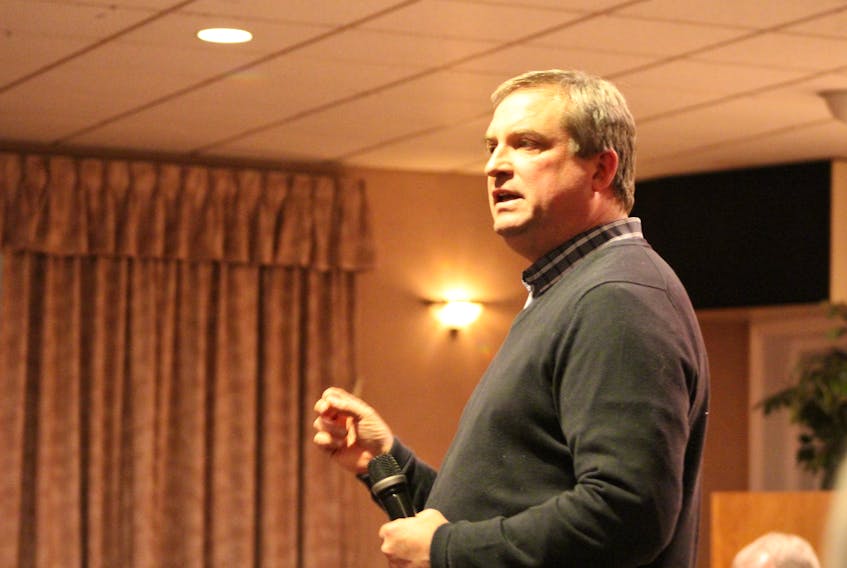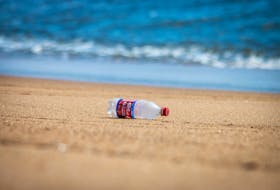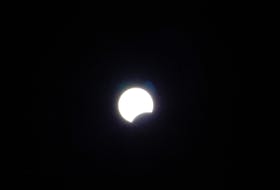Nature abhors a vacuum, as the saying goes, but by golly you can always count on a politician to wade right in to fill those knowledge gaps with chatter.

Enter Gerry Byrne.
The provincial fisheries minister put himself in the middle of things this week when he commented on CBC coverage of the cleanup of dead salmon at an aquaculture operation on the south coast.
Byrne compared reporter Chris O’Neill-Yates’ photos of water tinged pink from salmon pigment being poured into the ocean to the images of dead seals on bloody ice that were often used as an emotional lever by animal welfare groups during the height of opposition to this province’s seal hunt.
“I’ve seen some very, very emotive issues when it comes to the seal hunt which do not reflect the realities,” Byrne said on CBC Radio’s “The Broadcast.”
“So I would caution, before anyone draws a conclusion.… Just think through how certain industries have been victimized by the production of images which may be far in excess of what is the truth of what’s happening here.”
CBC must have some kind of new-fangled fantastical cameras if they can produce images “which may be far in excess of what is the truth.”
Last I heard, none of my media colleagues were using augmented reality technology.
In late September, Byrne was trumpeting the province’s new “strong, public reporting policy that enhances industry accountability and public trust,” and said the province has also adopted “Policies that focus on… environmental stewardship, and best practices that adhere to, or exceed, industry standards.”
A Northern Harvest Sea Farms spokesman told CBC that the provincial government has known about the large-scale salmon die-off since Sept. 2. But Byrne insists he had no regulatory authority to inform the public of the salmon deaths, and does not know how many fish died.
That comment certainly points to the need for more stringent regulation for the aquaculture industry.
Wait a minute, though. Wasn’t that exactly what Byrne was touting at an aquaculture conference three weeks after his government was told about all those dead fish?
In late September, Byrne was trumpeting the province’s new “strong, public reporting policy that enhances industry accountability and public trust,” and said the province has also adopted “Policies that focus on… environmental stewardship, and best practices that adhere to, or exceed, industry standards.”
Well, where are those policies now? Where is the public reporting, when neither the provincial nor the federal government, nor the salmon farm company is willing to say how many fish have died. All we have is the company’s word that all those floating bits of fat and other decomposing salmon detritus in the ocean on the south coast aren’t harming the environment.
Byrne tweeted on Oct. 2: “A specific number cannot be provided by the company, by DFO or mother nature at this point as de-population continues & survivorship rates are established. A full report will be given. Is there something about this which is unclear.”
Yes. There is much that is unclear. The company knows how many salmon were in the cages. It should know by now — more than 40 days later — roughly how many survived and thus how many died, where all those dead fish will end up after being rendered, and in what form. And what exactly is in the pigment and water mix that was dumped into the ocean?
This is no slight against aquaculture. It’s simply the absence of information leading to public conjecture. It’s a simple fix, though: the company and the government could just offer up more information. If it’s all harmless and no fishers’ livelihoods or marine life are under threat from what’s in the water, then let’s see some evidence of that.
Byrne’s comment about the CBC images broadcast from the site was obviously intended to be disparaging, suggesting somehow that the images painted a false picture.
It reminded me of the Stephen Harper era, when reporters were kept away from the planes arriving with the bodies of Canadian soldiers killed in Afghanistan, as if somehow the lack of news coverage would lead to — what? The public perception that Canadians weren’t being killed in the line of duty?
Byrne says we have a strong provincial public reporting policy when it comes to aquaculture.
Let’s see that in action.
Pam Frampton is The Telegram’s managing editor. Email [email protected]. Twitter: pam_frampton
MORE FROM PAM FRAMPTON









